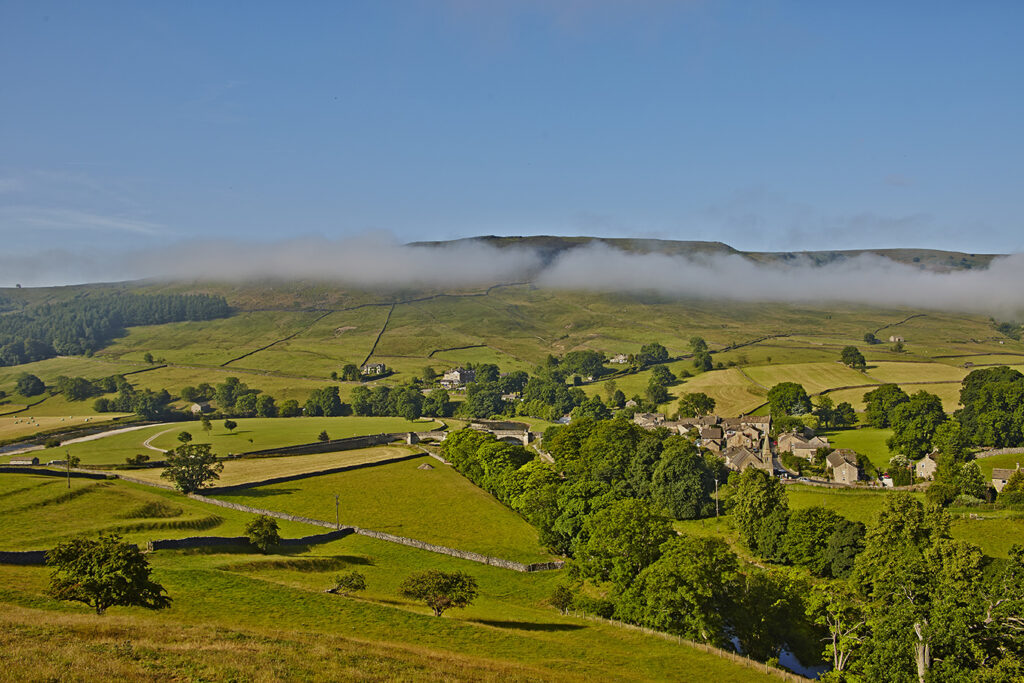Yorkshire Myths

If you want to learn a little more about Yorkshire myths, you’ve come to the right place. There’s a lot of mysterious goings on in this great county of ours. During your next stay on the Bolton Abbey Estate why not explore some of the locations these myths derived from? You never know what you might find!
Lake Semerwater
Lake Semerwater is the second largest naturally occurring lake in North Yorkshire and it is a sight to behold. If you’re in the area, it is well worth a visit, but be aware of the secret that lies within its depths.
There are many myths about this lake but our favourite is that one night, an old man dressed in rags, thought by some to be an angel in disguise, came to the affluent town of Semerwater in search of food and drink. He went from door to door, asking the residents for help but was turned down at every house. All apart from the very last one.
It was a small house which belonged to an elderly couple. They were the only people to welcome and treat him as a guest. They shared all that they had with him, even though it was very little. After he had eaten and rested he thanked the couple and was on his way.

Casting off his rags as he left the town, the man turned around and bestowed a curse to punish the merciless people for their unkindness: “Semerwater rise, and Semerwater sink, and swallow the town all save this house where they gave me food and drink.” As he spoke these words, the waters of the lake rose up and flooded the town, drowning all the people who lived there. Only the elderly couple and their home were saved.
Some say when the water levels of the lake were low in the 1930s, remains of Iron Age and Bronze Age settlement were found on the lake bed and examined. Could there be any truth behind this tale of a curse from an angel searching for kindness?
Mother Shipton
Our next myth originates from the lovely spa town of Knaresborough, a popular tourist spot and only a short drive from Bolton Abbey.
The story of Mother Shipton entails the unusual birth of Ursula Southeil in a cave by the banks of the River Nidd. Ursula’s mother, Agatha, was only fifteen when she gave birth. She had to flee from her family as she wouldn’t reveal the father’s identity, resulting in the local community disowning her.
Two years later, Ursula and her mother were separated after a local monk intervened. A family took the girl in, and she was raised in Knaresborough whilst her mother was sent to a convent, never to see one another again. Due to her unusual appearance, Ursula was teased by locals, forcing her to return to the cave where she was born. Whilst there, she was able to study the local flora and fauna, and began making potions with the native flowers.
At the age of 24, she became Ursula Shipton after marrying Tobias Shipton, a carpenter from York. Tobias unfortunately died only a few years later.
In addition to brewing potions, Ursula received national fame for being able to predict the future and made many wild prophecies. Some believe that she predicted the Great Fire of London in 1666 and even the World Wide Web after prophesying, “Around the world, thoughts shall fly in the twinkling of an eye”. She lived until the age of 73 when she died in 1561.
In 1630, the Mother Shipton’s cave and ‘petrifying’ well, which can turn objects into stone due to the water’s high mineral content, became England’s oldest tourist attraction. Critics have said that her life story and prophecies were over-exaggerated and fabricated in order to attract visitors to the location. However some believe that there is strong evidence to suggest Mother Shipton was a real person, but how true her legacy was we may never know.
Cow and Calf Rocks on Ilkley Moor
There is a beautiful rock formation on the top of Ilkley Moor known locally as the Cow and Calf Rocks. This is a brilliant spot for a ramble on a clear day as the views are glorious from the top of the moors.

There are many tales about the origins of the rocks but the most common is the story of Rombald the Giant, who lived there once upon a time. Local folklore has it that Rombald was running away from his wife and accidently crushed a large rock and broke it in two while she dropped stones from her skirt to form the “Skirtful of Stones” rock formation. Rumour has it, if you look carefully at the rocks, they appear to have been separated by a giant foot! The moorland between Ilkley and Keighley is also called Rombald’s Moor, after the giant.
The story of Pendle’s Witches
This next myth might originate from slightly outside of Yorkshire (just!), but we couldn’t leave it out! Pendle is a beautiful locations full of quirky tales and myths. It’s also not far from Bolton Abbey and definitely worth visit next time you decide to stay with us.
The tale of the Pendle Witches originated in 1612, when 12 people, 10 women and 2 men, were accused of murder by witchcraft. The witch trial that followed was the most famous in English history and was quite unusual for a number of reasons. All of the witches were from the surrounding area of Pendle, which back then was considered by the authorities as a ‘lawless and wild region’. Not only were all of the 12 accused from the same area but they were all from just two families: Demdike and Chattox. Throughout this witch trial ten were found guilty and executed by hanging, one died in prison and only one was found not guilty.

Some have said that the outbreaks of witchcraft in and around Pendle may prove the extent to which people could make a living by posing as witches. Some believe that in the remote villages to the east of Pendle Hill, elderly widows would sometimes claim special powers. This gave them an opportunity to earn a living and to demand respect in their community. Many of the allegations resulted from accusations that members of the Demdike and Chattox families made against each other, perhaps because they were in competition, both trying to make a living from healing, begging, and extortion. Things started to go wrong for this way of earning a living when King James I and VI developed a fear of witches, it is thought that he believed 300 witches were plotting his death.
These are just a taste of some of the local myths that Yorkshire has to behold, so why not come along to Bolton Abbey at the heart of Yorkshire and see some of them for yourself!